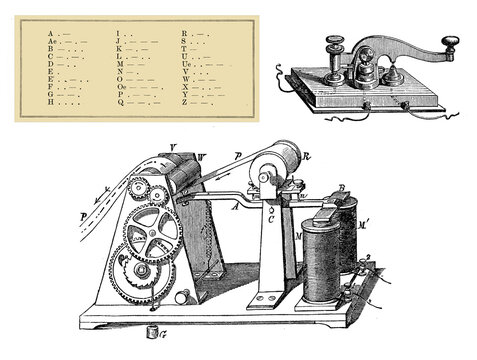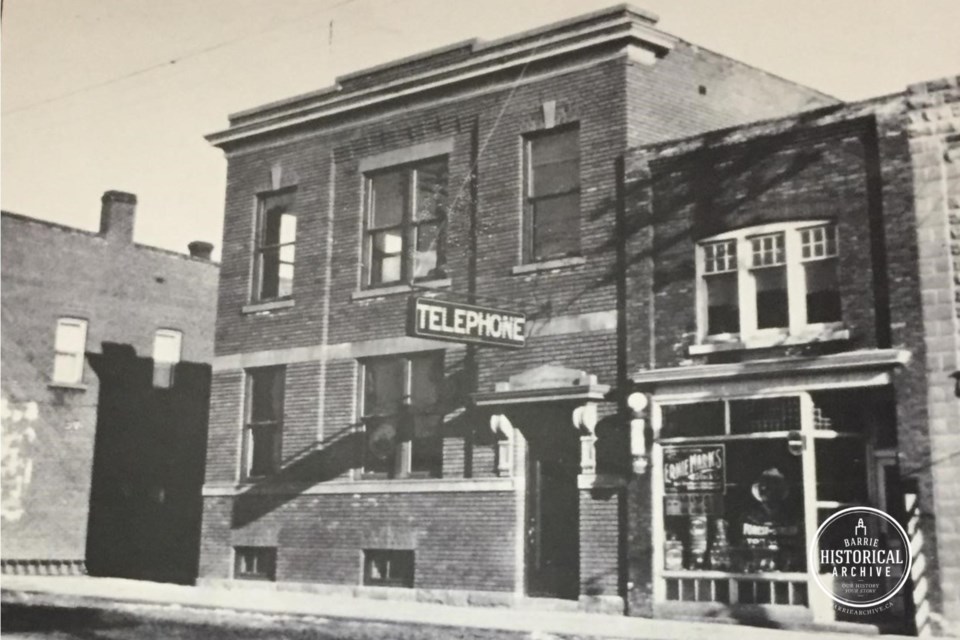Introduction

The telephone is one of the most influential inventions in human history, revolutionizing communication and laying the foundation for modern telecommunications. Its creation is often credited to Alexander Graham Bell, but the story of the telephone is more complex, involving multiple inventors and numerous legal battles. This blog delves into the scientific principles behind the telephone, the key dates in its development, and the controversy surrounding its invention.
The Scientific Principles Behind the Telephone

The operation of the telephone relies on two core principles: electromagnetism and the conversion of sound waves into electrical signals. When a person speaks into a telephone, their voice generates sound waves, which cause a diaphragm to vibrate. These vibrations are then converted into electrical signals by a microphone. These electrical signals travel through wires to a receiver, where they are converted back into sound by a speaker.
The scientific foundation of the telephone can be traced back to experiments with electromagnetic waves and sound. Researchers like Michael Faraday had already shown that vibrations could induce electrical currents, which laid the groundwork for Bell’s design. Hermann von Helmholtz also conducted significant work on the transmission of sound through electrical signals, which directly influenced Bell’s work.
Early Innovations and Attempts to Transmit Sound

The development of the telephone wasn’t a single event but rather a series of incremental advancements. In 1837, Samuel Morse invented the telegraph, which allowed for the transmission of coded messages over long distances using electrical signals. While the telegraph was revolutionary, it had its limitations: it could only transmit text-based messages in the form of Morse code.
Numerous inventors sought to overcome the limitations of the telegraph by transmitting voice signals. Antonio Meucci, an Italian inventor, is often credited with creating the first voice communication device, which he called the telettrofono, in the 1850s. Meucci’s device, however, lacked funding and patents, leading him to be sidelined in the historical narrative of the telephone’s invention.
The Invention of the Telephone: Bell vs. Gray

The telephone’s invention is often attributed to Alexander Graham Bell, who received a patent for the device on March 7, 1876. Bell’s version of the telephone was capable of transmitting voice signals over a distance using a liquid transmitter. Bell’s first successful test came on March 10, 1876, when he famously called out to his assistant, Thomas Watson, saying, “Mr. Watson, come here, I want to see you.”
However, Bell’s claim to the invention was not without controversy. On the same day that Bell filed his patent application, Elisha Gray, another inventor, submitted a caveat (a preliminary patent application) for a very similar telephone design. Gray’s design also involved the transmission of sound via electrical signals, but Bell’s full patent was granted first. This led to legal disputes over who truly invented the telephone. Although Bell is officially recognized as the inventor, some argue that Gray was equally deserving of credit.
The debate extends beyond Bell and Gray. Antonio Meucci, who demonstrated a working telephone in the 1850s, lacked the resources to patent his invention. Meucci filed a patent caveat in 1871, five years before Bell’s patent, but financial difficulties prevented him from maintaining the patent. In 2002, the U.S. Congress passed a resolution recognizing Meucci’s work and his contribution to the invention of the telephone.
Alexander Graham Bell’s First Blueprint of the telephone, ca. 1876.


Alexander Graham Bell’s first blueprint of the telephone, submitted with his patent application on February 14, 1876, marked a pivotal moment in communication technology. This blueprint is the earliest technical drawing of a device capable of converting sound waves into electrical signals and transmitting them over a wire.
The key components in Bell’s design, as shown in the blueprint, include:
- A liquid transmitter, which was used to convert vibrations from sound waves into electrical impulses. Bell’s blueprint depicted a diaphragm (membrane) that would vibrate when sound, such as a voice, was spoken into the device.
- A receiver that worked on the principle of electromagnetism, converting the electrical signals back into sound.
The blueprint detailed the following key processes:
- Sound waves (the speaker’s voice) strike a diaphragm in the transmitter, causing it to vibrate.
- These vibrations create variations in electrical current, which travel through a conducting wire.
- The electrical signals reach the receiver, where another diaphragm vibrates, converting the electrical signals back into sound waves, allowing the listener to hear the transmitted message.
One of the most distinctive features of Bell’s early design was his use of a liquid-based transmitter, which was eventually replaced by more reliable solid-state transmitters in later iterations of the telephone. The transmitter in this blueprint consisted of a diaphragm placed above a conducting liquid, typically a dilute sulfuric acid solution. Vibrations in the diaphragm caused variations in electrical conductivity through the liquid, generating the corresponding electrical signal.
On March 10, 1876, just a month after filing his patent, Bell successfully tested this design by speaking to his assistant, Thomas Watson, uttering the famous words: “Mr. Watson, come here, I want to see you.” This demonstration marked the first successful transmission of intelligible human speech over a wire.
The significance of this blueprint goes beyond the invention itself; it laid the foundation for the modern telecommunications industry and sparked widespread development in electromagnetic communication.
The original blueprint, along with Bell’s patent documents, is housed at the U.S. Patent and Trademark Office and has been digitized for public access. It stands as a testament to Bell’s innovative thinking and marks the birth of one of the most important inventions of the 19th century.
The Impact of the Telephone on Society

The telephone transformed human communication by allowing real-time voice conversations over long distances. It not only revolutionized personal communication but also changed the way businesses operated, making instant communication a critical component of modern commerce.
By the 1880s, telephone networks began to spread, with the Bell Telephone Company leading the charge in the United States. Switchboards and operators became an integral part of early telephone systems, connecting calls manually before the advent of automated exchanges. The rapid development of the telephone network marked the beginning of the global telecommunications industry, which has since evolved into today’s internet-based communications infrastructure.
Conclusion
The invention of the telephone was a milestone in the history of communication, built on decades of scientific research and numerous inventors’ contributions. While Alexander Graham Bell is commonly credited with the telephone’s invention, others like Elisha Gray and Antonio Meucci played pivotal roles in its development. The telephone’s creation, founded on the principles of electromagnetism and sound transmission, laid the groundwork for the modern telecommunications revolution, forever changing how people communicate.
References
- Bruce, R. V. (2013). Bell: Alexander Graham Bell and the Conquest of Solitude. Cornell University Press.
- Gray, C. (2018). The Real Inventor of the Telephone: Exploring the Meucci Controversy. History Today, 68(5), 10-17.
- Jonnes, J. (2017). Empires of Light: Edison, Tesla, Westinghouse, and the Race to Electrify the World. Random House Trade Paperbacks.
- Schwartz, H. M. (2020). The Forgotten Genius of Antonio Meucci. Smithsonian Magazine.